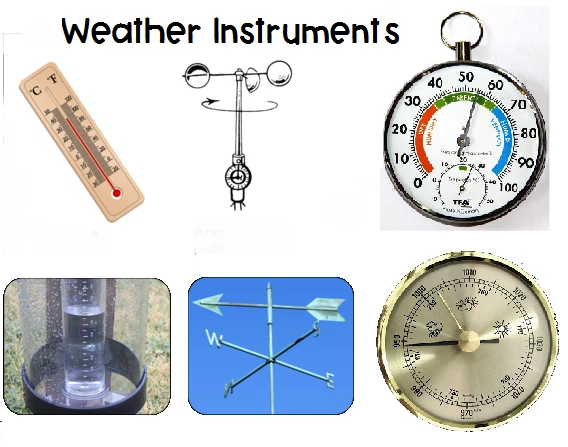
# Weather Instruments: Essential Tools for Meteorologists
Introduction to Weather Instruments
Weather instruments are specialized tools used by meteorologists to measure various atmospheric conditions. These devices provide crucial data that helps in weather forecasting, climate research, and environmental monitoring. From simple thermometers to sophisticated radar systems, weather instruments come in various forms, each serving a unique purpose in understanding our planet’s complex weather patterns.
Common Types of Weather Instruments
Thermometers
The thermometer is perhaps the most recognizable weather instrument. It measures air temperature, which is fundamental to understanding current weather conditions and predicting future patterns. Modern digital thermometers provide highly accurate readings, while traditional mercury or alcohol thermometers remain reliable options.
Barometers
Barometers measure atmospheric pressure, a key indicator of impending weather changes. Falling pressure often signals approaching storms, while rising pressure typically indicates fair weather. Meteorologists use both aneroid and mercury barometers to track these pressure variations.
Hygrometers
This instrument measures humidity – the amount of water vapor in the air. Understanding humidity levels is essential for predicting precipitation, fog formation, and even human comfort levels. Modern hygrometers use various technologies including capacitive, resistive, and thermal measurement techniques.
Advanced Weather Measurement Tools
Anemometers
Anemometers measure wind speed and direction. The most common type features rotating cups that spin faster as wind speed increases. Other designs use ultrasonic waves or pressure differences to determine wind characteristics. This data is vital for weather forecasting, aviation safety, and wind energy applications.
Rain Gauges
These simple yet effective instruments measure precipitation amounts. Standard rain gauges collect rainfall in a graduated cylinder, while more advanced tipping bucket gauges provide automated measurements. Snow gauges use different techniques to account for the water equivalent in snowfall.
Weather Radars
Modern meteorology relies heavily on weather radar systems. These powerful instruments can detect precipitation, measure its intensity, and track storm movement over large areas. Doppler radar adds the capability to determine wind speed and direction within storms, significantly improving severe weather warnings.
Specialized Meteorological Instruments
Ceilometers
Ceilometers measure cloud height and vertical visibility using laser or light-based technology. This information is particularly important for aviation weather services and air traffic control operations.
Pyrheliometers
These instruments measure direct solar irradiance, helping scientists understand the sun’s energy input to Earth’s climate system. They’re essential for solar energy research and climate change studies.
Weather Balloons
Equipped with instrument packages called radiosondes, weather balloons provide vertical profiles of temperature, humidity, pressure, and wind from the surface up to the stratosphere. This upper-air data is crucial for numerical weather prediction models.
The Importance of Weather Instruments
Weather instruments form the backbone of meteorological science. They provide the objective data needed to:
- Create accurate weather forecasts
- Issue timely severe weather warnings
- Study climate patterns and changes
- Support agricultural planning
- Ensure aviation and maritime safety
- Guide emergency preparedness efforts
As technology advances, weather instruments continue to become more precise, automated, and capable of measuring increasingly subtle atmospheric phenomena. The integration of these instruments into global observation networks has revolutionized our ability to understand and predict weather systems, ultimately helping to protect lives and property worldwide.
Keyword: wether instruments
0 thoughts on “Weather Instruments: Essential Tools for Meteorologists”